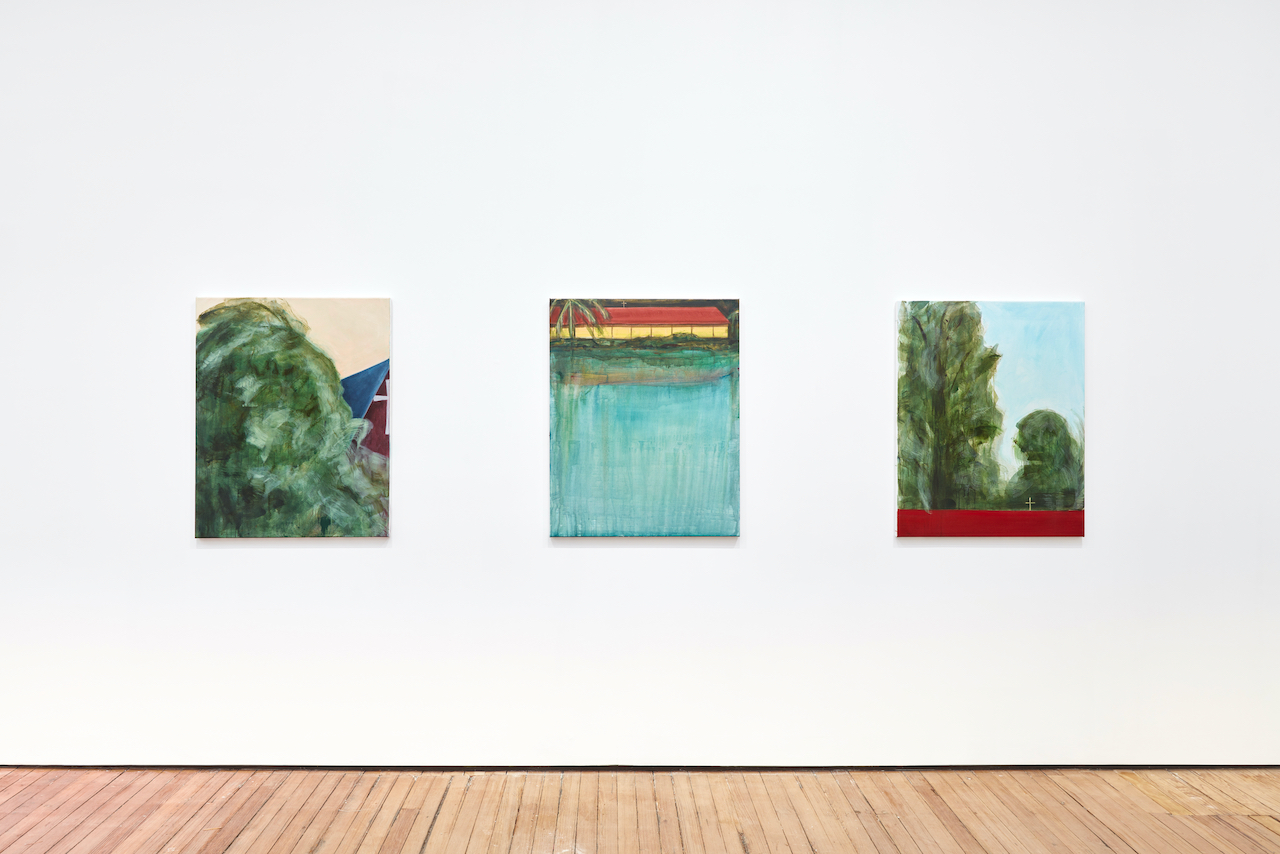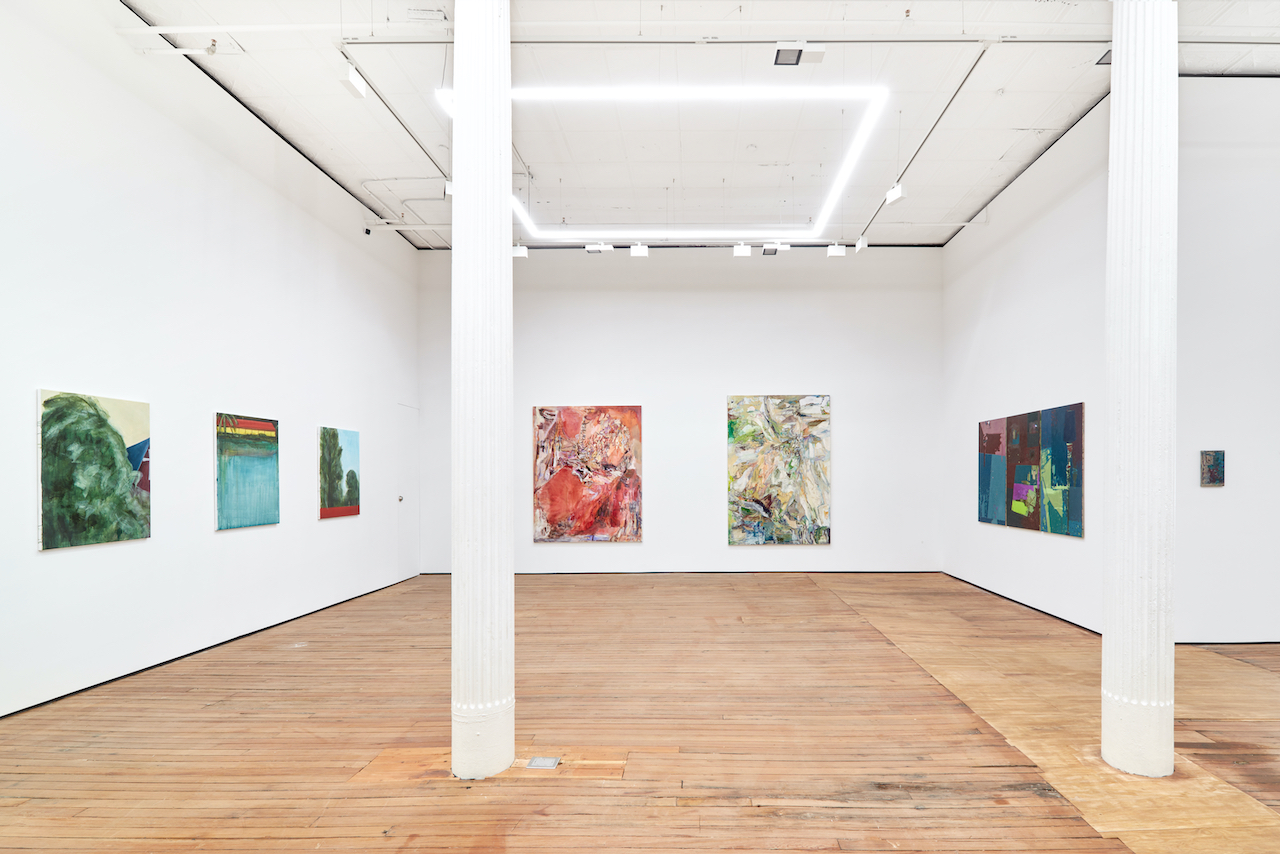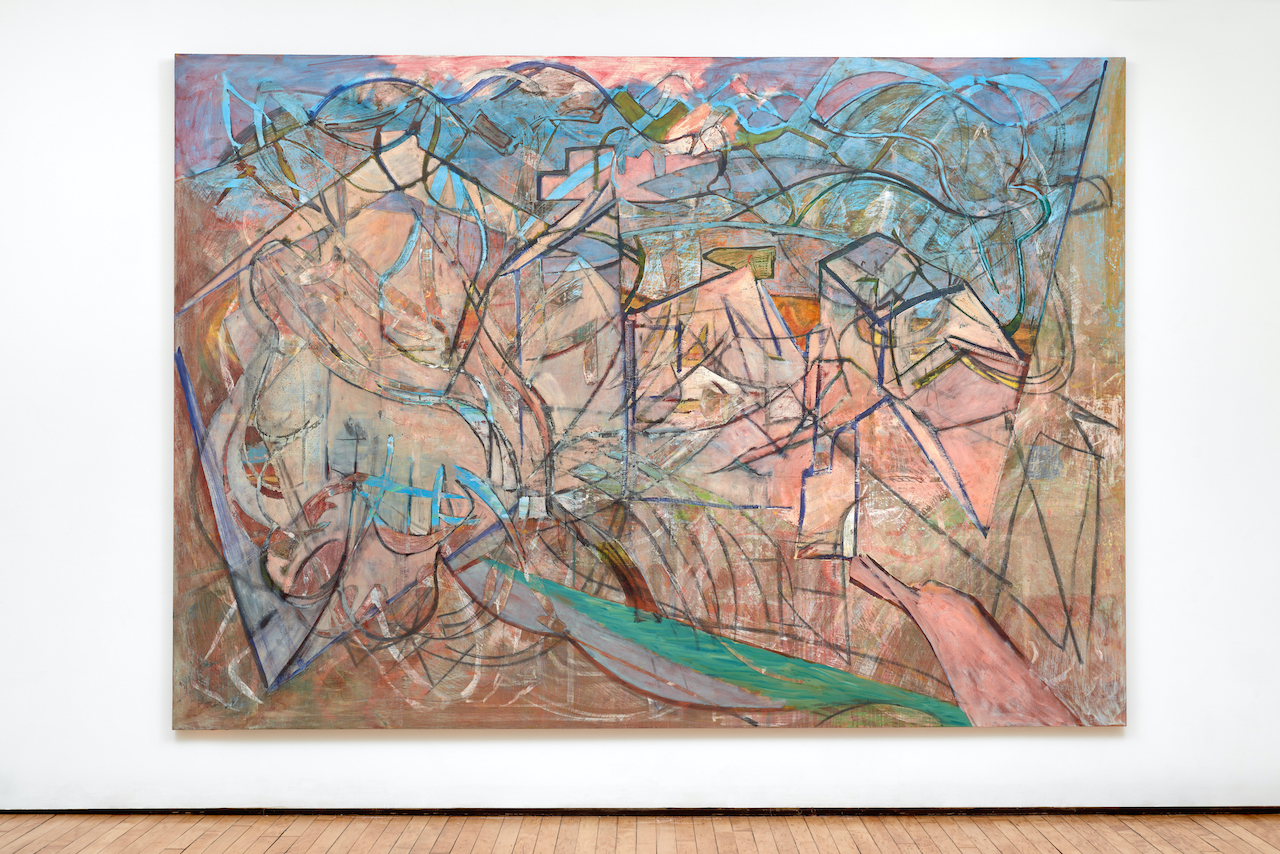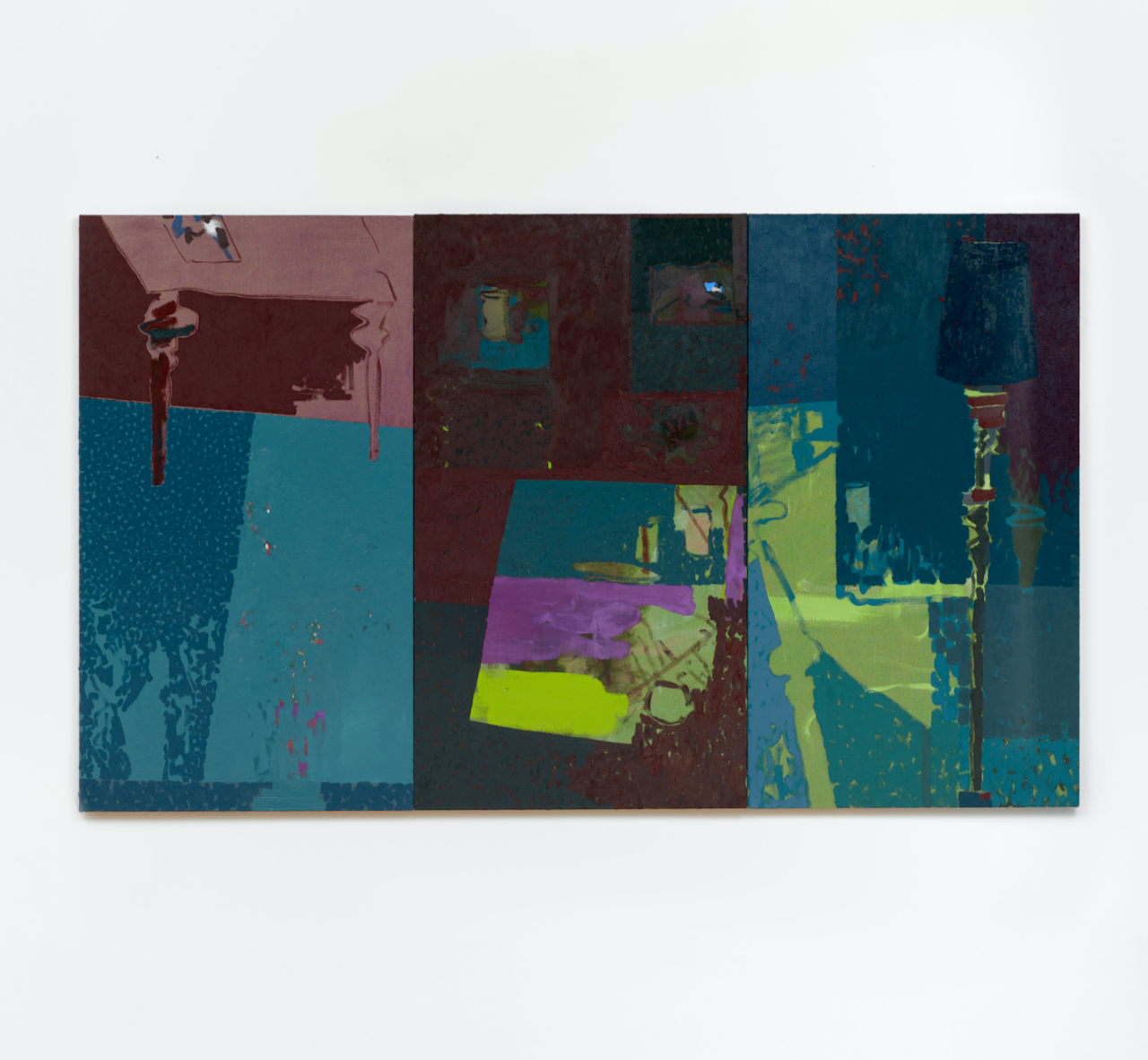Contemporary British Painting Thrives in The Kingfisher’s Wing at GRIMM


A new group show at GRIMM gallery shows just how strong British painting is today. The title of the exhibition, The Kingfisher’s Wing, is taken from Burnt Norton, TS Eliot’s 1936 poem that later became the first in a quartet and considered man’s relationship with time, the divine, and the universe. Burnt Norton emphasized the importance of living in the present, but still recognizing vestiges of the past that linger in the present and endlessly cycle into the future.
“…After the kingfisher’s wing
Has answered light to light, and is silent, the light is still
at the still point of the turning world.”
Curator Tom Morton uses Eliot’s emphasis on stillness to frame the exhibition. The works in the show position art, specifically paintings, as a kind of “still point” that reflects far more than just the present moment. Paintings inherently encapsulate a crafted moment. Time is very literally frozen in the layers of paint used to build each surface. Morton presents a rich selection of paintings that exist within their own histories with stylistic and allegorical meanings that can indeed reflect past, present, and an imagined future.

The works in the show share common parameters: they are paintings and were made by artists who have strong ties with Great Britain—all are British though not all were born there. Apart from these characteristics, the works on view span figuration and abstraction. Most are colorful, many are remarkably large. The artists range from established figures like William Monk and Mary Ramsden to emerging names like Christian Quin Newell and Gabriella Boyd, the latter having just joined GRIMM’s roster this spring.
Two standout pieces are monumental, abstract works by Tim Stoner. In Edge of Town (Santa Barbara), muted browns and pinks cover the surface of the linen canvas, mixing and overlapping into a dense landscape of shapes that meet bright purple and blue swathes along the top. Bold, black lines delineate geometric shapes, forming an abstract landscape, identified in the title as Santa Barbara. The work immediately brought to mind recent paintings by George Condo, in particular the works from his November 2020 show, Internal Riot, at Hauser & Wirth in Chelsea.

Similarly evoking other great artists is Matthew Krishanu’s Red Roof and Water (2022). Nodding to the abstract artist Richard Diebenkorn’s Ocean Park series, Krishanu’s work has a large square of blue acrylic paint along the bottom, which is topped with bands of washy gray blending to green. A bold red roof and strip of bright yellow rectangles emerges just below the top edge of the canvas. As if giving a representational form to Diebenkorn’s abstracted buildings, Krishanu’s composition bears a strong similarity to the color scheme of Ocean Park no. 79 (1975). Religious symbols like crosses and suggestions of chapels also hide within Krishanu’s canvases.

Krishanu’s work hangs in the back room of the gallery between two additional works by the artist, as well as the aforementioned abstract paintings by Stoner and several other remarkable works by Francesca Mollett, Mary Ramsden, and William Monk. It’s in this room that the show truly shines. Mollett’s gestural abstract paintings pair beautifully with those by Stoner. Both artists fill their canvases with swathes of relatively muted colors, almost washy in parts. Yet their works are remarkably distinct. Mollett’s layered surfaces make her paintings appear almost like collages. Frenetic lines pull the eye in, inviting the viewer to closely inspect each small detail. These abstract, dense lines give way to patches of color, as if a top layer has been peeled away. At times resembling Cecily Brown, others recalling Mark Bradford, Mollett’s style is inevitably uniquely her own.

Ramsden presents equally powerful works, in particular All the rest is hypothesis and dream. At first appearing to be an abstract triptych, the work unfolds into a dreamlike interior scene upon closer inspection. Again we see nods to art history and the long tradition of painting, in particular interior domestic settings. With a flatness similar to Matisse, Ramsden’s triptych has a storybook quality. Indeed, a quick look might even bring to mind the classic children’s book Goodnight Moon, written by Margaret Wise Brown and illustrated by Clement Hurd.
The subtle references to other artists are like specters of past works clambering beneath the surfaces. This is not to say they are derivative or contrived, but rather they evoke a sense of déjà vu that causes the viewer to stop briefly in their tracks. These references could easily be overlooked by a visitor unfamiliar with the history of painting, which is the precise beauty of art itself. Stripped of any historical context or knowledge, the works in the show still ignite a sense of curiosity and excitement. This is perhaps the exact message that Morton seeks to propose–though very literally unmoving, unchanging visual representations of the present, paintings are layered with and within history and will inevitably evolve in the future.
The Kingfisher’s Wing offers a masterclass in curation. While the lens proposed with Eliot’s poem might seem difficult to grasp, the impact and very nature that Morton aims to put forward is achieved regardless of whether or not the viewer is aware. The works don’t need to be “read” with the goal of connecting them to time or to the legacy of painting. They are vessels for the past, present, and future by their very existence. Ultimately, with or without the nuances added by Eliot’s poem, viewers find themselves in the presence of a visually stunning display of unforgettable paintings.
The Kingfisher’s Wing is on view through August 19 at GRIMM, 54 White Street, New York, NY 10013.
You Might Also Like
Khari Turner’s Dramatic Paintings Navigate Murky Waters
Akshita Gandhi Challenges British Audiences in her ‘Love Letter’ to Mumbai
What's Your Reaction?
Annabel Keenan is a New York-based writer focusing on contemporary art, market reporting, and sustainability. Her writing has been published in The Art Newspaper, Hyperallergic, and Artillery Magazine among others. She holds a B.A. in Art History and Italian from Emory University and an M.A. in Decorative Arts, Design History, and Material Culture from the Bard Graduate Center.

